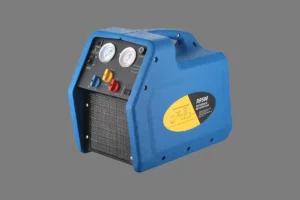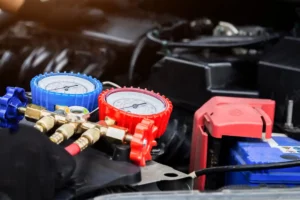Understanding Cryopumping
In a vacuum container, a low-temperature surface has the ability to remove gases. This type of pump, which achieves gas removal by condensing and adsorbing gases on a low-temperature surface, is known as a cryopump.
Generally, devices that use cold panels at temperatures above 150K to capture water vapor and organic solvents are called condensers. Devices that use cold panels at temperatures below 80K, placed between the pump and the container to capture pump backstreaming gases, are called cold traps or baffles. Only gas removal devices with cold panels below 20K are referred to as cryopumps.
The Evolution of Cryopumping
Initially, people used low-temperature baffles at the temperature of liquid nitrogen to capture oil (mercury) vapor from diffusion pumps. This method increased the ultimate pressure of diffusion pumps by 1 to 2 orders of magnitude.
However, to remove common gases (such as nitrogen, oxygen, carbon monoxide, etc.) from a vacuum system using cold panels, temperatures below that of liquid hydrogen (20.4K) are required. To remove hydrogen, neon, and similar gases, temperatures below 4K are necessary. Among common gases, helium has the highest vapor pressure, reaching 1 atmosphere (1 atm = 101325 Pa) at 4.2K. Removing helium solely with cold panels is extremely challenging.
Modern Cryopumps and Enhancements
Modern liquid helium refrigeration systems have reached high levels of efficiency and can operate continuously and automatically for extended periods. The emergence of miniature refrigeration systems has provided a solid foundation for the development of cryopumps.
In 1957, Lasarew and Baily were the first to apply extremely low temperatures to cryopumps. Modern cryopumps significantly improve their gas removal performance by coating the cold panels with adsorbents such as activated charcoal and molecular sieves, allowing them to remove all gases in the 10 – 20K temperature range.

The Cryopumping Mechanism
The fundamental principle of cryopumping involves the condensation, adsorption, and capture of gases on low-temperature surfaces. Low-temperature condensation occurs when the gas pressure in the space is higher than the corresponding saturated vapor pressure of the condensation plate.

Cryopump System
Once the gas pressure reaches its saturated vapor pressure, the pumping process stops. To achieve lower pressures, low-temperature adsorption methods are needed. If the low-temperature surface can maintain a low coverage of a single molecular layer, the surface’s saturation pressure can be reduced to 10^-1 to 10^-12 times its own condensation vapor pressure.
Gas Removal Artistry
The saturated adsorption capacity varies significantly at different temperatures. At low pressures, the adsorption capacity decreases linearly with pressure, indicating that more adsorption sites are occupied as the pressure increases. After depositing several monolayers, the adsorption capacity reaches its limit. If the gas pressure is higher than the saturated vapor pressure at this point, condensation occurs. The maximum deposition layer thickness is limited by the surface temperature and the thermal radiation from surrounding high-temperature surfaces.
Cryopump Advantages and Versatility
The greatest advantage of cryopumps is their ability to achieve clean vacuum (or oil-free vacuum). The working medium is fully enclosed inside a Dewar or refrigeration system and is not exposed to the vacuum, eliminating the problem of contamination by oils, mercury, or other impurities.
Additionally, cryopumps can achieve pumping speeds ranging from 10^2 L/s to 10^5 L/s. Cryopumps with such high pumping speeds are essential for large space simulation equipment, where achieving such speeds with other types of vacuum pumps is difficult.
Ultimate Pressure and Specific Applications
Cryopumps also have low ultimate pressures. Under unheated conditions, stainless steel test chambers can achieve ultimate pressures of 10^-7 Pa; after baking at 300°C, the ultimate pressure can increase by 1 to 2 orders of magnitude.
Due to their advantages of oil-free operation, high efficiency, and ease of use, cryopumps find widespread applications in vacuum coating, particle accelerators, space simulation equipment, controlled nuclear fusion, electron microscopes, mass spectrometers, high-frequency crystal calibration, and various scientific research fields.
Conclusion
In conclusion, cryopumps play a vital role in achieving high-quality vacuum environments across diverse industries and scientific endeavors. Their unique capabilities and versatility continue to drive advancements in vacuum technology.
Coolink, a TOP 3 Global HVAC Vacuum Pump Manufacturer & Quality Industrial Vacuum Pump Supplier from China






